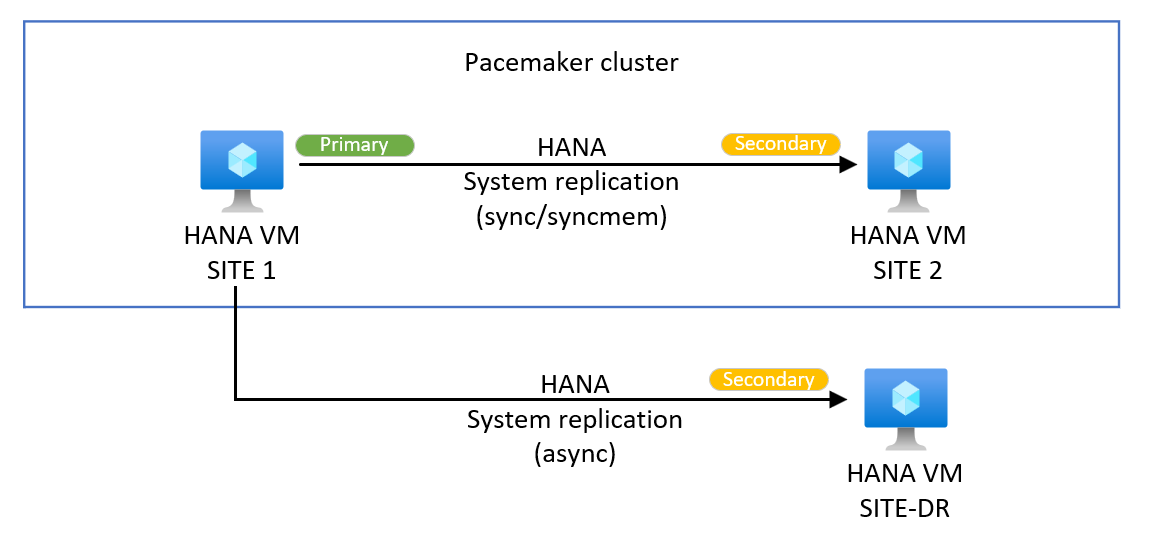In the realm of enterprise systems, ensuring high availability and disaster recovery solutions are paramount. SAP HANA System Replication emerges as a reliable ally, offering continuous synchronization of HANA databases across multiple locations. This article serves as a step-by-step guide to setting up a system replication, particularly when replicating from a primary to multiple targets, which could be within the same data center or across remote sites.
Understanding the Landscape
Assumptions and Infrastructure
Before delving into the technicalities, let’s establish a hypothetical scenario:
1. SITEA: Current Primary
2. SITEB: Secondary (within the same data center as SITEA)
3. SITEC: Second Secondary (located remotely, serving as a Disaster Recovery Site)
Assuming SITEA and SITEB are managed by a cluster, with inter-node communication established and all necessary network configurations in place.
Configuring Replication Modes
To cater to the different locations and replication needs, distinct modes are configured:
1. For SITEA and SITEB (Same Data Center):
Replication Mode: Synchronous in Memory (syncmem)
Operation Mode: Log Replay
2. For SITEC (Remote Site):
Replication Mode: Asynchronous (async)
Operation Mode: Log Replay
Technical Steps
Let’s walk through the process of configuring multi-target HANA system replication:
1. On Primary Node (SITEA):
Login as
hdbnsutil -sr_enable –name=SITEA
2. On Secondary Nodes (SITEB and SITEC):
Stop HANA database and backup existing SSFS data and key files.
Copy SSFS data and key files from SITEA to SITEB and SITEC.
3. Register Replication on Secondary Nodes:
• On SITEB:
hdbnsutil -sr_register –remoteHost=SiteA_Hostname –renoteInstance=inst_num_of_SiteA \
–replicationMode=syncmem –operationMode=logreplay –name=SiteB
• On SITEC:
hdbnsutil -sr_register –remoteHost=SiteA_Hostname –renoteInstance=inst_num_of_SiteA \
–replicationMode=async –operationMode=logreplay –name=SITEC
4. Start HANA on Secondary Nodes (SITEB and SITEC).
Validating Replication
To ensure replication is functioning as expected:
On the Primary System (SITEA), run system replication status check.
Challenges and Solutions
While the configuration may seem straightforward, testing and achieving the expected outcomes pose challenges:
1. Automatic Reconnection:
Secondary systems may not automatically connect to the new primary after a takeover.
Solution: Maintain parameters for force log retention and log retention propagation.
2. Optimizing Re-Sync:
After a takeover, full data shipping might occur instead of applying only missing/delta logs.
Solution: Configure parameters for optimized re-sync.
DR-Drill Scenario
In a disaster recovery drill, ensure proper sequencing for takeover and reconnection:
1. Replication Check:
Verify replication is active and in sync before takeover.
2. Takeover Process:
Perform takeover on the intended secondary node.
3. Adjusting Replication Modes:
If necessary, change replication modes post-takeover to align with expectations.
Conclusion
Setting up SAP HANA Multi-Target System Replication demands attention to detail and foresight. By following the outlined steps and addressing potential challenges, organizations can establish a robust framework for high availability and disaster recovery.
FAQs
1. What is SAP HANA System Replication?
AAP HANA System Replication ensures continuous synchronization of HANA databases, providing high availability and disaster recovery solutions.
2. Why is Multi-Target Replication Important?
Multi-target replication allows for redundancy across multiple locations, enhancing fault tolerance and resilience.
3. How do I Validate System Replication?
Use tools like systemReplicationStatus.py to verify replication status and alignment.
4. What are the Key Challenges in System Replication?
Challenges include automatic reconnection of secondary systems post-takeover and optimizing re-sync processes.
5. How Can I Ensure Smooth DR-Drills?
Proper sequencing, replication checks, and adjustment of replication modes are critical for successful DR drills

One thought on “Setting Up SAP HANA Multi-Target System Replication: A Comprehensive Guide”